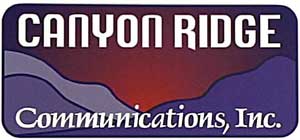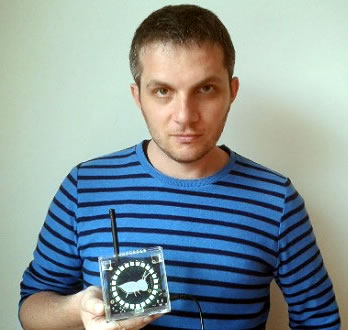Selected portions of the BloostonLaw Telecom Update, and/or the BloostonLaw Private Users Update — newsletters from the Law Offices of Blooston, Mordkofsky, Dickens, Duffy & Prendergast, LLP are reproduced in this section with the firm's permission. 
| BloostonLaw Telecom Update | Vol. 17, No. 46 | November 17, 2014 |

Electronic Filing Required for Section 208, 224 Proceedings By way of an Order released on November 12, the FCC now requires electronic filing through ECFS in two categories of cases: (a) formal complaints under Section 208 of the Communications Act (Act); and (b) pole attachment complaints under Section 224 of the Act. In order to expedite the implementation of this new process, the FCC has waived its rules regarding effective dates and made the new requirement effective as November 22 (unless the electronic system is not in place by then). Headlines 
FCC Prepping Further E-Rate Modernization Order Entailing Major Increase in Size of Program Chairman Tom Wheeler is having the FCC staff prepare a further order modernizing the Schools and Libraries universal service support program (known as the E-Rate Program). The highlight of the order will be an increase in the annual cap on the size of the program from $2.4 billion to $3.9 billion. Although this 62 percent increase has been criticized by the two Republican Commissioners, it is virtually certain that the three Democrat Commissioners will adopt and implement it. Many high-cost support recipients will find it curious that the Chairman is explaining much of the $1.5 billion E-Rate cap increase as an adjustment for inflation when the FCC has steadfastly refused to consider or adopt inflationary adjustments for the current $2.0 rural carrier budget and $4.5 billion total budget for high-cost support. However, most RLECs are expected to support the E-Rate Program expansion in the hope that it will make more funds available for rural schools and libraries. They can also be expected to increase their support for accelerated Universal Service contribution reform not only to address the $1.5 billion increase in the total amount of Universal Service Fund disbursements (from $8.5 billion to $10.0 billion) but also to provide more funding for the upgrade of the high-cost local and middle mile networks needed to connect schools and libraries with the rest of the world. The E-Rate order being prepared will address various proposals set forth in the Further Notice of Proposed Rulemaking that was included as part of the FCC’s July 2014 E-Rate Modernization Order. As clients may remember, the July 2014 E-Rate order refocused the program on making high-speed WiFi service available in schools and libraries, and made a number of other substantial administrative and funding changes. The forthcoming order is likely to address matters such as: (a) requirements for high-cost recipients to respond to school and library requests for proposals for E-Rate services; (b) the size of communities eligible for the additional “rural” discount; (c) state matching programs; (d) dark fiber usage; and (e) options for schools and libraries to construct their own E-Rate facilities. In a statement, Commissioner O’Rielly said, “I am disheartened to hear that the FCC intends to increase the E-rate program by 62 percent, bringing the total USF budget to approximately $10 billion. How will the FCC pay for this spending spree? Initially, the FCC will raise telecommunications bills by at least 16 percent. And, ultimately, I predict the FCC will disastrously impose new fees on broadband service – a move that even some consumer groups have opposed.” AWS-3 Auction Surpasses Minimum Draw as Bidding Approaches $25 Billion Bidding for AWS-3 licenses approached $25 Billion on the fifth day of bidding in FCC Auction 97, demonstrating the wireless industry’s almost insatiable demand for mobile wireless spectrum, and little apparent concern for the possibility of having to share portions of the band indefinitely in certain areas with incumbent Federal users. This total far exceeds the $10.06 Billion aggregate “reserve price” that the Commission set for the paired channel licenses prior to the auction (which was met on Tuesday), and guarantees that the auction will be a success for the FCC and U.S. Treasury (and that applicants are not bidding in vain). As of the final round of bidding on Wednesday (Round 19), the FCC had received total gross bids of $24,168,801,900 for the 880 Economic Area (EA) licenses and 734 Cellular Market Area (CMA) licenses. Most notably, a flurry of bidding for the New York-Long Island EA J-Block (20 MHz) license over the past two days saw the Provisionally Winning Bid (PWB) price soar from $826 million at mid-day yesterday to over $1.7 billion this afternoon. During this same time period, the PWB price for the LA-Riverside EA J-Block license climbed from $584 million to over $1.2 billion. In all, there were a total of 1,605 new bids placed in Round 19 for the 1,614 available licenses. Bidding for the AWS-3 A1- and B1-Block unpaired licenses, spectrum in the 1695-1710 MHz band that will be used for low-power mobile uplink operations, had been minimal or non-existent in many markets until Round 17 on Wednesday afternoon, when one or more bidders placed minimum bids on all of the remaining licenses that had not yet received a bid. The FCC has set an aggregate reserve price of $580 million for the unpaired licenses. A total of 70 bidders qualified to participate in the AWS-3 auction, including entities affiliated with Verizon, AT&T, T-Mobile, Dish Network Corp., Grain Management, LLC and investor Mario Gabelli. However, details about each company’s participation, and the identity of bidders for individual licenses, is kept strictly confidential in light of limited information disclosure procedures that the FCC has in place for Auction 97. FCC anti-collusion rules restrict bidders from issuing public statements about their auction participation or otherwise disclosing information about their auction participation until after the post-auction down payment deadline has passed. A portion of the proceeds from the AWS-3 auction will be used to relocate certain incumbent Federal government operations from a portion of the AWS-3 band, but other Federal government ( e.g., DoD) operations will remain in the band indefinitely. Winning bidders will need to coordinate their AWS-3 operations with these Federal incumbents, unless and until such operations are relocated out of the band; and winners must either coordinate with or relocate incumbent commercial licensees. Additional proceeds will be used towards funding construction of the FirstNet public safety broadband network, with a target of $7 Billion toward construction costs that could be twice as much. The AWS-3 auction is the second of three auctions mandated by Congress to fund FirstNet. The first auction, the so-called “H-Block auction” (Auction 96) which was held last February, brought in $1.56 billion, with a subsidiary of Dish Network Corp. as the sole winning bidder. Dish had pledged to bid at least $1.56 billion in that prior auction in exchange for more flexibility in how it uses other wireless broadband frequencies. With significant proceeds from the AWS-3 auction, this should put less pressure on the FCC to look for FirstNet proceeds from the 600 MHz broadcast incentive auction, scheduled for 2016. 181 Applicants Submit 600 Rural Broadband Experiment Bids On November 12, the FCC issued a press release announcing that the Rural Broadband Experiment application process saw 181 applicants submit almost 600 project bids, representing close to $885 million worth of projects — almost nine times the amount of money available. The next step entails FCC staff identifying the provisionally winning bidders, who will then be required to submit additional information demonstrating their financial and technical ability to meet the program’s requirements for their project bids. According to the press release, applicants who are able to make the requisite demonstrations could potentially launch their experiments as early as spring 2015. As readers will recall, the $100 million available for the experiments is divided into three groups as follows: - $75 million to test competitive interest in building networks that are capable of delivering 100 Mbps downloads and 25 Mbps uploads
- $15 million to test interest in delivering service at 10/1 speeds in high cost areas
- $10 million for 10/1 service in areas that are extremely costly to serve.
Given the amount of money available in comparison to the bids received, competition will be fierce indeed. FCC Issues Reconsideration Order on Rural Call Completion, Seeks PRA CommentsOn November 13, the FCC issued an Order on Reconsideration granting a Petition for Reconsideration of its October 28 Rural Call Completion Order filed by United States Telecom Association (USTelecom) and the Independent Telephone and Telecommunications Alliance (ITTA), while denying or dismissing four others. As a result of the Petition granted, the FCC modified the call completion rules so that the recordkeeping, retention, and reporting requirements adopted in the Order do not apply to: (i) intraLATA toll calls that are carried entirely over the covered provider’s network, and (ii) intraLATA toll calls that are handed off by the covered provider directly to the terminating local exchange carrier (LEC) or to the tandem that the terminating LEC’s end office subtends. By way of background, the Rural Call Completion Order required covered providers to record and retain specific information about each call attempt to a rural operating company number from subscriber lines for which the providers make the initial long-distance call path choice in a readily retrievable form for the six most recent months. Covered providers were also required to submit a quarterly report containing information on long-distance call attempts from subscriber lines for which the covered providers make the initial call path choice. In granting the US Telecom / ITTA Petition, the FCC concluded that excluding on-net intraLATA toll traffic from the scope of these rules would not undermine the goals of the Rural Call Completion Order and would not impair its ability to monitor and address problems associated with completing calls to rural areas. Further, the FCC concluded that the cost of including on-net intraLATA toll traffic in the recording and reporting requirements exceeded the limited incremental benefit from collecting this data. The FCC dismissed or denied Petitions filed by COMPTEL, Sprint, Transcom Enhanced Services (Transcom) and Carolina West Wireless (Carolina West). COMPTEL sought reconsideration of the smaller covered provider exception adopted in the Order, which excluded from the scope of the rules providers that make the initial long-distance call path choice for less than 100,000 subscriber lines. Sprint asked the FCC to reconsider its decision “to use the required call completion reports as the basis for subsequent enforcement action;” urged the FCC to make the RLEC surveys required by the Order available for independent review; and argued that the FCC’s compliance burden estimate was too low. Transcom requested reconsideration of the FCC’s decision to apply certain aspects of the Order to so-called “intermediate providers that are not common carriers.” Carolina West asked the FCC to modify the definition of “covered provider” as it applies to the smaller covered provider exception. Law & Regulation 
911 Reliability Certification/PSAP Outage Notification Requirements Deadlines Announced On November 18, the FCC’s Public Safety and Homeland Security Bureau (PSHSB) announced that its 911 reliability certification and PSAP outage notification requirements became effective on October 15, 2014. Therefore, an Initial Certification of substantial progress toward meeting the requirements of the Annual Reliability Certification will be due to FCC on October 15, 2015, and Annual Reliability Certifications will then be due each year thereafter (i.e., October 15, 2016, and so on). As we reported in the December 18, 2013 edition of the BloostonLaw Telecom Update, the Commission adopted a Report and Order (911 Reliability Order) requiring all "Covered 911 Service Providers" to meet an annual certification requirement and to take "reasonable measures" to ensure 911 circuit diversity, availability of backup power at central offices that directly serve PSAPs, and diversity of network monitoring links. A “Covered 911 Service Provider,” is defined as “any entity that provides 911, E911, or NG911 capabilities such as call routing, ALI, ANI, or the functional equivalent of those capabilities, directly to a PSAP, statewide default answering point, or appropriate local emergency authority, or that operates one or more central offices that directly serve a PSAP." A central office “directly serves a PSAP” if it "(1) hosts a selective router or ALI/ANI database (2) provides functionally equivalent NG911 capabilities, or (3) is the last service-provider facility through which a 911 trunk or administrative line passes before connecting to a PSAP." The Order also requires all Covered 911 Service Providers to certify annually to certain basic measures in three substantive areas, including 911 circuit auditing, backup power at central offices that directly serve PSAPs, and diverse network monitoring links. The FCC also amended section 4.9 of the rules, which required carriers to notify PSAPs when communications outages occur that affect 911 service “as soon as possible.” Under the amended rule, Covered 911 Service Providers “must notify PSAPs of outages potentially affecting 911 service to that PSAP within thirty minutes of discovering the outage and provide contact information such as a name, telephone number, and e-mail for follow-up.” (Emphasis supplied). FCC Issues Agenda for November 21 Open Meeting The FCC issued the final agenda for its November 21 Open Meeting. At the meeting, the FCC will consider: - a Notice of Proposed Rulemaking to provide broadcasters greater flexibility in their disclosure of contest terms.
- a Notice of Proposed Rulemaking, Declaratory Ruling, and Order to facilitate the transition to next generation networks by promoting and preserving the Commission’s public safety, consumer protection, and competition goals.
- a Policy Statement and Notice of Proposed Rulemaking regarding its approach to 911 governance and proposing mechanisms to ensure continued accountability for reliable 911 services as technologies evolve.
- a presentation regarding the 2014 International Telecommunication Union Plenipotentiary Conference, which will include a summary of key issues addressed at the Plenipotentiary and the conference outcomes.
The meeting begins at 10:30 a.m. EST and will be broadcast live with open captioning over the Internet from the FCC Live web page at www.fcc.gov/live . FCC Issues Regulatory Fees Small Entity Compliance Guide On November 14, 2014, the FCC issued a Small Entity Compliance Guide on the assessment and collection of regulatory fees for Fiscal Year 2014. While the annual regulatory fees were due on September 23, 2014, it is important to remember that this guide will provide information regarding those fees as well as small fees which are payable upfront (as part of application fees) for certain radio services, including many of the Part 90 services as well as the Microwave Services under Part 101 and the Rural Radio/BETRS services under Part 22 of the FCC’s Rules. This guide is similar to the information that we provided to our clients in August/September of this year. Nonetheless, our small business, non-profit and local government clients should review this guide and let us know if you have any questions. House Republican Members Oppose Title II Broadband Reclassification On November 12, House Energy and Commerce Committee Chairman Fred Upton (R-MI) and Senate Commerce, Science, and Transportation Committee Ranking Member John Thune (R-SD) led a group of Republican legislators — indeed, every Republican member of the House Energy and Commerce Committee and the Senate Commerce, Science, and Transportation Committee — in sending a letter to FCC Chairman Tom Wheeler to “strongly urge” the FCC not to adopt Title II regulation for the Internet. “Recent proposals have suggested that the FCC can use its authority under Title II of the Communications Act to create legally enforceable rules to regulate Internet access. We believe this is beyond the scope of the FCC’s authority and would defy the plain reading of the statute,” wrote the group of forty-one. “Given the significant legal barriers to reclassification and the uncertainty that yet another appeal of the FCC’s rules would bring to the Internet, we strongly urge you to reject any such reclassification proposals. As you know, we are not alone in our concerns. In May, Rep. Gene Green led twenty Democratic members of the House in a letter calling on the commission to reject reclassification. We urge the commission to heed our bipartisan concerns.” A copy of the full letter can be found here . Industry 
Law Enforcement Concerned Over New Device Encryption According to an article in the Yahoo! Tech section, law enforcement officials are upset about the latest versions of Apple’s iOS and Google’s Android mobile operating systems. Specifically, they are concerned that new levels of encryption introduced by these versions (8 for iOS and “Lollipop” for Android) will hinder investigations because there is no master key that the companies can provide to investigators, even if they have a warrant. The companies simply do not have the keys to provide. According to the Wall Street Journal, one Justice Department official said the companies have promised customers "the equivalent of a house that can't be searched, or a car trunk that could never be opened.” In response to these concerns, Apple has reportedly argued that it’s “no big deal” — the FBI can still access data backed up on its cloud service. But as FBI director James Comey noted in remarks made in October, “uploading to the cloud doesn’t include all of the stored data on a bad guy’s phone, which has the potential to create a black hole for law enforcement. And if the bad guys don’t back up their phones routinely, or if they opt out of uploading to the cloud, the data will only be found on the encrypted devices themselves.” Calendar At-a-Glance 
October
Oct. 1 – FCC Form 477 due (Local Competition and Broadband Reporting) .* December
Dec. 1 – Deadline to Increase Residential Rate Floor to $16.
Dec. 5 – Comments are due on US Telecom Petition for Forbearance from Certain Wireline ILEC Regs.
Dec. 5 – Comments are due on Unauthorized EAS Alert Public Notice.
Dec. 8 – Comments are due on TracFone Petition for Declaratory Ruling on 911 Taxes.
Dec. 15 – Deadline for Special Access Data Collection.
Dec. 15 – Reply comments are due on Part 32 Accounting Rules NPRM.
Dec. 17 – Comments are due on Part 22 Technical Changes.
Dec. 19 – Reply comments are due on Unauthorized EAS Alert Public Notice.
Dec. 22 – Reply comments are due on US Telecom Petition for Forbearance from Certain Wireline ILEC Regs.
Dec. 23 – Reply comments are due on TracFone Petition for Declaratory Ruling on 911 Taxes. January
Jan. 15 – Annual Hearing Aid Compatibility Report is due.
Jan. 19 – Reply comments on Part 22 Technical Changes are due.
Jan. 31 – FCC Form 555 (Annual Lifeline ETC Certification Form) is due. * This deadline has been suspended indefinitely. A new deadline has not been set at this time. | BloostonLaw Telecom Update | Vol. 17, No. 47 | November 20, 2014 |
Special Issue 
FCC Reopens Form 477 Filing Interface; 2014 Form 477 Filings Due December 11 The FCC announced today that its Form 477 filing interface, available here , has finally been reopened. As a result, Form 477 filings of data as of June 30, 2014 are now due December 11. Form 477 filings are usually due on September 1 each year. This year, however, the FCC extended the deadline to October 1 to accommodate revisions to the filling, and suspended the deadline indefinitely on September 29 due to technical difficulties with the electronic filing interface. According to the FCC’s Public Notice, filers who submitted their Form 477 filings prior to the closing of the site on September 26, 2014 do not need to take any further action; those filings remain in “Submitted” status. In addition, filers who started the filing process prior to the closing of the site do not need to re-upload any files or re-enter any records provided previously and should see those data after logging in to the interface. | 

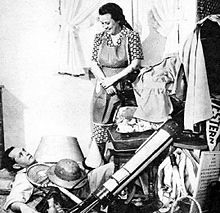











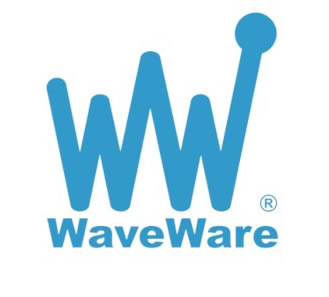



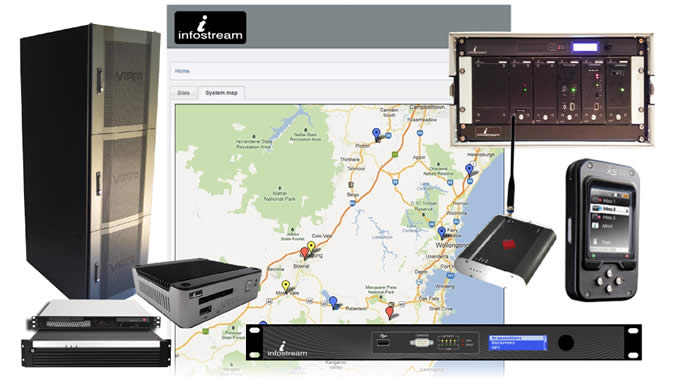

















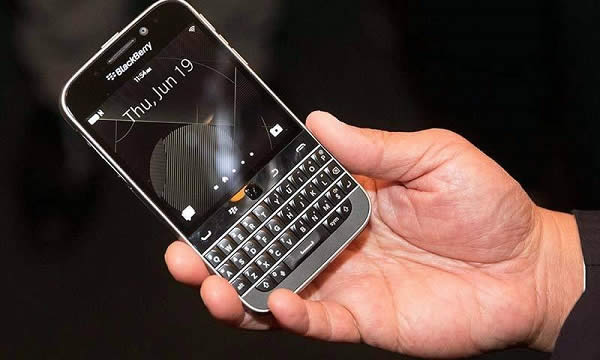



 David George and Bill Noyes
David George and Bill Noyes




